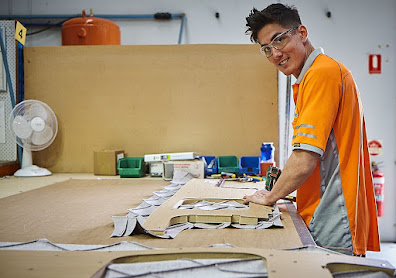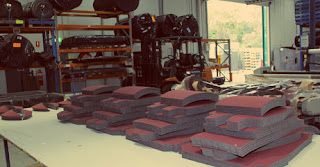How to Select Commercial Upholstery?
Selecting commercial upholstery is a critical decision in decorating commercial spaces for employees, customers, and clients. After all, commercial furniture is much different from residential furniture. In addition, furniture in schools, offices, banks, hospitals, restaurants, and other commercial spaces endure high-stress and high-traffic conditions.
Therefore, commercial upholstery services providers must be more selective while picking fabrics for upholstery. This process is impacted by two main factors: functionality and aesthetics.
If the upholstery looks grand but feels uncomfortable, it will simply not do. On the other hand, if upholstery feels good and is fade and spill resistant but jars with the looks of the commercial space, it could be a wrong choice.
Following are some main factors that can help one in selecting commercial upholstery:
Location
To opt for the right commercial upholstery, one must consider the intended location of the furniture. As for furniture in areas with high traffic like waiting areas, one will need sturdy fabric to ensure maximum durability. In addition, furniture placed next to open windows will require fade-resistant upholstery to prevent the furniture from looking faded and old in the future.
One’s needs
Before selecting commercial upholstery, Melbourne-made, one must evaluate what uses the furniture will be put to. Does one want upholstery for furniture for one’s restaurant or cafe? These are high-traffic areas used by hundreds of people daily. There will be spills of ketchup, vinegar, beverages, etc., on the upholstered seats. As such, the upholstery material selected must be long-wearing, durable and waterproof.
The looks
Coffee shop or corporate office? The kind of upholstery depends on the ambience of the commercial space. Comfortable and soft leather furniture is an amazing solution for creating a charming and rustic ambience. They are also durable and hard-wearing for a long time. On the other hand, vinyl upholstery is more cost-effective and practical for use in highly used areas like hospital waiting rooms.
Abrasion resistance
Durability and abrasion resistance are highly desirable qualities of commercial fabrics. It means they must have a tremendous ability to resist wear by friction or rubbing.
In fabrics, abrasion resistance is measured by the Martindale test. To test, the fabric being is continuously rubbed against wire mesh or worsted wool till the yarn begins to break, and it is rated depending on the number of ‘rubs’ it took to degrade the material.
Commercial fabrics need to have a Martindale score of 30,000. The higher the rating, the superior it is for commercial applications. Abrasion resistance for high traffic areas like waiting rooms in hospitals and banks should need furniture with upholstery measuring Martindale ratings of at least 60,000.
Lightfastness
Also called colour lightfastness, it is a rating on how long a fabric must be exposed to light, such as direct sunlight, before it begins to fade. The higher this score, the more resistant it will be to colour fading.
For testing, the fabric will be exposed to the artificial and intense light produced by a xenon arc lamp. Measuring the lightfastness consists of grading it using a reference of blue wool in a score from one to eight. The higher the score, the more resistant the fabric to fading by UV light exposure. Fabrics used for curtains and furniture near open windows must have high lightfastness scores.
Colour fastness
Upholstery fabrics must have high colour fastness against rubbing. It means that they should have dyes that will resist rubbing away and get transferred to other materials. This has a significant impact. For instance, no hotel can afford the situation of staining the customers’ clothes.
The fabric should be tested for both dry and wet rubbing. Following the testing, the fabric is rated as per the Greyscale of colour change on a scale of one to five. The higher the value, the more the fabric is suited to commercial upholstery.
Pilling resistance
It is the capacity of a fabric to resist fibre piling on the surface. Pilling refers to the formation of pills by surface fibres, which are balls of tangled threads. Pilled upholstery can hurt customers’ comfort and hence, the image of the commercial space.
Piling resistance is measured on a scale of one to five. Therefore, fabric with high piling resistance is desirable for commercial upholstery, Melbourne-made.
Easy to clean
Fabrics for commercial upholstery should be easy to clean because they are used in high-traffic areas and are prone to staining and soiling. For best results, commercial upholstery should be spot cleanable with soap and water, can be machine washed, and needs no chemicals for cleaning.
Aesthetic fitting
Shopping for commercial upholstery can leave one overwhelmed by the sheer choice of colours, patterns, and fabrics. Such a selection of fabric can make one stressed. A tip to take out some stress is to choose a fabric that complements one’s décor and does not overpower or crash with the latter. Also, plan for the future so that current upholstery will not clash with future renovations in the commercial space.
In sum, these are how one can select commercial upholstery services. The upholstery must be lightfast, colourfast, abrasion resistant, piling resistant, and easily cleaned.


Comments
Post a Comment